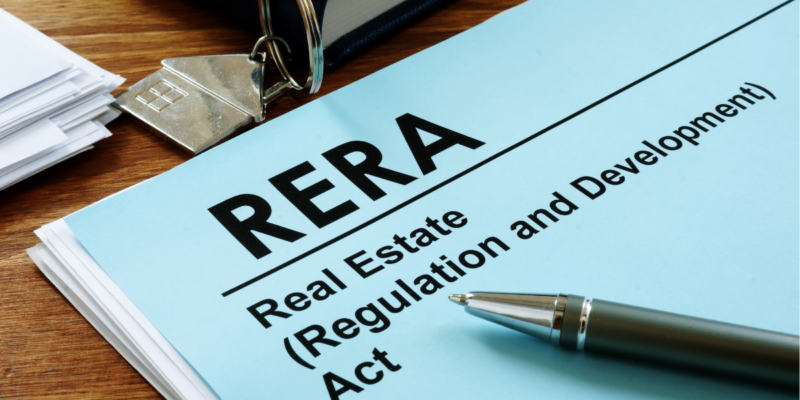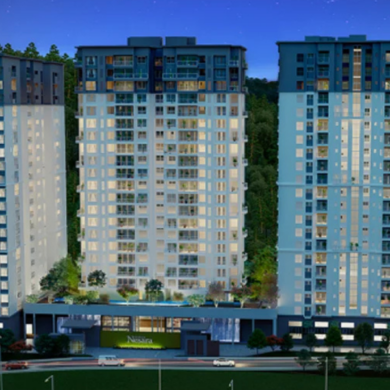
Builder warranty under RERA ensures protection for homebuyers, by requiring developers to address structural defects within 5 years of possession – covering issues like quality, workmanship, and materials.
Builder warranty under RERA serves as an important protective tool for homebuyers, ensuring developers rectify defects and uphold construction quality standards, in the defined warranty period. This provision mandates developers to address issues like structural defects and workmanship errors in residential properties, enhancing confidence in real estate investments. By holding developers accountable, the builder warranty under RERA reassures buyers of the durability and safety of their property.
Table of Contents
What is RERA?
The Real Estate (Regulation and Development) Act (RERA) is an important legislation in India, aimed at improving transparency, accountability, and buyer protection in the real estate sector. It was introduced to regulate developers – ensuring timely project delivery, quality control, and accurate disclosure of project information.
Under this act, the RERA 5-year warranty is a notable provision requiring developers to resolve structural or quality-related defects in new homes within 5 years of possession. The act ensures that homebuyers are legally protected against faulty construction, and promotes builder compliance through penalties & dispute resolution mechanisms.
Key Objectives of RERA in Real Estate Regulation
RERA was created to bring transparency, efficiency, and accountability to the real estate sector, addressing key concerns for homebuyers. Its primary objectives include:
- Enforcing Timely Project Completion: Developers must adhere to promised delivery timelines, minimising delays
- Ensuring Legal Compliance by Builders: Builders must follow the legal framework, ensuring clear, enforceable contracts
- Improving Construction Quality Standards: Higher construction standards are mandated to ensure long-term safety of the property
- Establishing a Dispute Resolution Mechanism: A streamlined process allows homebuyers to resolve conflicts efficiently
- Enhancing Builder Accountability: RERA holds developers accountable for their commitments, safeguarding consumer rights
Buyer Protections and Obligations for Builders under RERA
Builder warranty under RERA provides essential protections to homebuyers, while imposing specific obligations on builders to ensure quality and fairness in property transactions. Key provisions include:
- Addressing Structural Defects in 5 Years: Builders are required to fix any structural defects that arise during this period
- Ensuring Quality of Workmanship and Materials: Developers are responsible for using quality materials and maintaining high standards of workmanship
- Resolving Disputes within Defined Timelines: RERA mandates a clear and efficient process for dispute resolution, ensuring prompt responses
- Allowing Buyers Legal Recourse for Compliance Failures: Homebuyers can seek legal action or compensation, if builders fail to meet RERA obligations
- Mandating Builder Accountability for Promised Deliverables: Developers must deliver properties as per the agreed specifications, ensuring buyers receive what they were promised
What is a Builder Warranty under RERA?
Builder warranty under RERA is a legal obligation for developers to rectify construction defects – ensuring safety, quality, and structural integrity within a defined timeframe. It primarily covers structural issues such as cracks in walls or foundations, as well as quality defects like faulty plumbing or electrical systems.
Under RERA, developers must address these defects for up to 5 years from the date of possession. This warranty is intended to uphold consumer rights, provide legal recourse, and maintain overall construction standards in residential properties.
Common Issues Covered in Builder Warranty under RERA
Builder warranty under RERA aims to address construction defects affecting the property’s usability, safety, and quality. Specific issues covered include:
- Structural Defects: This includes foundational cracks, issues in load-bearing walls, roof failures, or overall structural stability
- Electrical and Plumbing: Defects in internal wiring, faulty fittings, or inadequate plumbing installations
- Waterproofing Failures: Problems such as leakage, dampness, or seepage in roofs, basements, or walls
- Drainage and Sanitation: Inefficient drainage systems or faulty sanitation installations
- Quality of Materials: Substandard materials leading to issues in flooring, tiling, or painting
Provisions of Builder Warranty Under RERA
Builder warranty under RERA requires developers to rectify defects in construction quality, workmanship, and materials within 5 years of possession. According to Clause 14 (3) of the Real Estate Act, builders must resolve such defects at no additional cost to homebuyers.
The builder has a maximum of 30 days to address complaints after receiving them. The warranty covers structural integrity, plumbing, electrical faults, and other defects that may compromise the building’s quality or safety. The warranty aims to ensure builder compliance, consumer rights, and property quality.
If builders fail to address defects within this period, buyers have the right to file claims with the RERA authority, which may impose penalties and facilitate dispute resolution. The warranty period for real estate under RERA creates a sense of security, as it clearly defines the developer’s obligations and protects homebuyers from financial or safety risks.
Read More: 12 Essential Things to Check While Buying an Apartment
Types of Defects Covered Under the RERA Builder Warranty
The RERA warranty broadly categorises defects into:
- Structural Defects: Issues affecting the building’s core stability, such as beam cracks or weakened foundations
- Non-structural Defects: Covers minor defects like door alignment, window fittings, or flooring problems
- Workmanship Defects: Inadequacies in the construction process, such as uneven tiling or poor paint finishes
- Plumbing and Electrical: Faults like leakage in pipelines or irregular power supply due to substandard wiring
- Material Deficiencies: Low-quality materials that compromise durability, safety, or functionality
Process for Claiming Builder Warranty Under RERA
Filing a warranty claim under RERA involves a clear process for homebuyers:
- Identify the Defect: Document the issue and its impact on the property
- Notify the Developer: Send a formal written complaint detailing the defect
- Follow Up: Builders have 30 days to rectify defects as per RERA rules
- Approach RERA Authority: If unresolved, file a complaint with the RERA authority for dispute resolution
- Seek Legal Recourse: If necessary, escalate to consumer courts for legal resolution
Builder Warranty under RERA vs. Home Insurance
While both builder warranties and home insurance offer protection, their coverage differs significantly. Builder warranties focus on construction quality, addressing defects like structural issues, while home insurance covers accidental damages caused by events like natural disasters or theft.
| Criteria | Builder Warranty | Home Insurance |
| Purpose | Covers construction defects | Covers accidental damages |
| Coverage Duration | 5 years under RERA | Usually annual, renewable |
| Covers | Structural defects, workmanship, materials | Natural disasters, fire, theft, accidents |
| Exclusions | Natural calamities, wear & tear | Construction quality or defects |
| Claim Process | File under RERA within 30 days | File with insurance provider |
What Happens If a Builder Fails to Comply with RERA Warranty Obligations?
If a builder fails to address defects within the stipulated period:
- Buyers’ Right to File a Complaint: Homebuyers can file a complaint with the RERA authority
- Legal Penalties for Builders: Non-compliance attracts penalties under the RERA Act, impacting the builder’s licence and reputation
- Compensation for Buyers: Buyers may seek compensation for unresolved defects, or initiate further legal action for property defect rectification
Read More: RERA ACT 2016 – Real Estate Regulatory Authority & RERA Rules!
Common Misconceptions About Builder Warranty Under RERA
It is in every homebuyer’s interest to understand builder warranty under RERA, yet misconceptions persist:
- Warranty Covers All Defects: Many believe the warranty covers every defect, but it specifically addresses structural, material, and workmanship defects – excluding natural wear and tear
- Instant Resolution: While RERA mandates a 30-day timeline for rectification, resolution might be extended if additional inspections or dispute escalations are needed
- Builder Responsible Beyond 5 Years: The misconception that developers remain responsible beyond the 5-year defect liability period can lead to confusion. The RERA warranty is limited to 5 years post-handover.
Tips for Homebuyers Regarding Builder Warranty under RERA
Here are some actionable tips to help homebuyers make the most of builder warranty under RERA:
- Clarify Warranty Coverage: Before finalising a purchase, get clear information about what is included in and excluded from the warranty
- Conduct Detailed Inspections: Thoroughly inspect the property at possession to identify defects early within the warranty period; hire a structural engineer if necessary
- Document Defects Accurately: For accurate claims, maintain detailed records of identified defects, including photos and written descriptions
- Ensure Prompt Communication: Notify builders of any issues promptly and keep a record of the communication, to ensure compliance with the RERA warranty
Conclusion
Builder warranty under RERA has enhanced the real estate landscape in India, by enforcing construction quality and safeguarding consumer rights. This legal provision ensures that developers address structural and workmanship defects within 5 years of property possession.
By establishing clear guidelines and responsibilities, builder warranty under RERA has improved accountability and boosted the confidence of homebuyers, fostering trust in the real estate market. To fully benefit from these warranties, homebuyers must have a clear understanding of the coverage, limitations, and claim process.
Awareness of the developer’s obligations, coupled with proactive inspections and prompt reporting of defects, can ensure that homebuyers are able to make timely claims and secure quality assurance. RERA regulations are designed to make the process more transparent, providing legal recourse if developers fail to meet their obligations. This regulatory framework has created a safer and more reliable environment for residential property investments in India.
FAQs
1. What is a builder warranty under RERA?
Builder warranty under RERA is a legal obligation covering structural defects, material issues, or workmanship flaws in new homes for up to 5 years, ensuring construction quality.
2. How long is a builder liable for his work in India?
A builder is liable for 5 years for his work in India, as per RERA. This covers construction defects and structural & workmanship issues from the date of handover.
3. How will RERA affect builders?
RERA affects builders by enforcing timely project delivery, quality compliance, and transparency – making them accountable for construction defects and ensuring consumer protection.
4. What is the difference between a guarantee and a warranty on a building?
The difference between a guarantee and a warranty on a building is that a warranty promises repairs within a specified period, while a guarantee is a broader assurance of quality and performance over time.
5. What is inhouse warranty?
Inhouse warranty is defect coverage managed internally by the developer, focusing on specific construction issues during the warranty period.
6. What happens if the builder doesn’t address the defect within 30 days?
If a builder doesn’t address the defect within 30 days, homebuyers can escalate the issue to the RERA authority for penalties or compensation.
7. Is builder warranty the same as home insurance?
No, builder warranty is not the same as home insurance, as builder warranties cover construction defects, while home insurance covers accidental damages, theft, and natural disasters.
8. What should I inspect when I take possession to benefit from the builder warranty?
When you take possession, you should inspect structural integrity, plumbing, electrical fittings, flooring, and overall workmanship – to identify & report defects early and to benefit from the builder warranty.
9. What is covered under a structural warranty?
A structural warranty covers defects in foundation, walls, beams, columns, and load-bearing components – ensuring structural safety.
10. Are all types of defects covered under the builder warranty?
No, all types of defects are not covered under the builder warranty, as it covers structural, plumbing, and electrical defects but excludes damages from natural wear & tear or accidental events.







